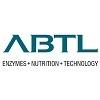Protease enzyme and trypsin inhibitor: Novus’s results
Dear Prof. Daulant Rehman Khan
Please make sure the protease you are using is low pH gut stable. From my experience there are many so called proteases av. in the market but some of them is not pH stable. As the protease will first start function in small intestine it has to pass the stomach. From the nature point of view Proteases have the best working condition at pH 8 to 10.
Producing Feed Proteases need to take this into consideration and create them gut stable and lowering the optimum Ph.
A different thing could be your diet formulation has been too concentrated and the birds didn't need this higher digestibility and thereby didn't make use of it.
Running a trial with protease you need to be around 15 % below breeder recommendation to see the effect, that is my experience.
Rgds. Arne Korsbak

Guillaume Trepo, message of interest for understanding the matter at hand. However, with regard to the compatibility of the action of the protease with the different carbohydrates, exactly one of the ones that has the greatest action on the soy fiber, mannanase, was missing. The relevance of this detail is related to the fact that the fiber soybean, admittedly, has a negative effect on the swine microbiota. I believe that this enzyme may also be compatible with protease.
Thanks all for the good discussion.
I would like to confirm a few points mentioned above:
Indeed exogenous Proteases do contribute to mitigate variability in quality from SBM (and protein sources) by improving aa digestibility and degrading Anti Nutritional Factors like Trypsin inhibitors and as well as lectin. True that the benefits are all the more important that digestibility of the amino acids of the raw material is suboptimal.
As also mentioned previously, exogenous Proteases also contribute positively to Gastrointestinal Functionality by reducing the risk of development of enteric pathogens.
Furthermore, exogenous proteases have a proven compatibility and even clear additivity with other feed enzymes such as Phytases, Xylanases & Amylases.
In a recent collaboration with Massey University, New Zealand, we at DSM have also observed synergistic effect on a.a. digestibility between DSM ProAct and DSM HiPhos:
A.J.Cowieson, J.O.B.Sorbara, G.Pappenberger, M.R.Abdollah, V.Ravindran. Toward standardized amino acid matrices for exogenous phytase and protease in corn–soybean meal–based diets for broilers. Poultry Science.
Available online 25 March 2020. https://doi.org/10.1016/j.psj.2019.12.071
Best regards,
.jpg&w=3840&q=75)

Effects of superdoses of phytase on peaking Hy-Line W-36 laying hen egg production and egg quality

Raquel Araujo, interesting and coherent information. However, I would like to ask a question about the nature of the protein, specifically that of soy. It is known that the gastric digestion of soy protein, produces a series of peptides with an action of importance for the health of the animal, as an antioxidant, of increasing the phagocytic capacity of macrophages, among others. Thus it can be deduced that the protein source goes beyond the simple supply of amino acids. It turns out that when we replace one protein source with another, we simply rely on the amino acid composition. And when we analyze the results, we usually associate the differences in animal performance, the possible differences in the digestibility of amino acids. This reality also has implications when we use amino acid supplementation, reducing the protein source. In this context, how is the use of proteases? I will be reasoning correctly.
Morning, hello there. Very interesting discussion, thanks for illustrating us. I have a question for Mercedes and Juxing; your answers, reflections, I assumed, are considering enzymes addition in dry form. What would be the effect if we would spray proteases + phytases + NSPases, let´s say more or less during a short period of time, or even at the same time over the pellet? Any experience? Many thanks! All the best to everyone.



















.jpg&w=3840&q=75)
.jpg&w=3840&q=75)

.jpg&w=3840&q=75)



